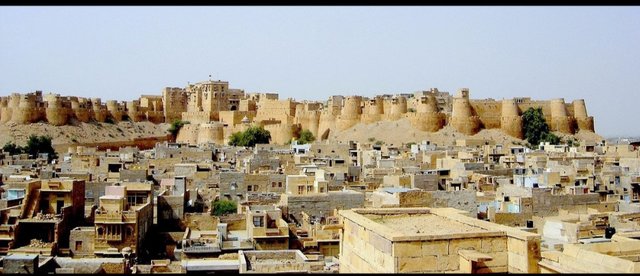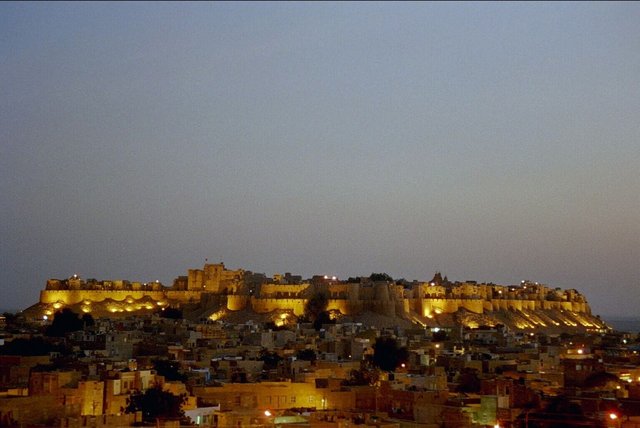Aan Baan Shan Jaisalmer Fort of Rajasthan.....
Jaisalmer Fort is arranged in the city of Jaisalmer, in the Indian state of Rajasthan. It is accepted to be one of the specific few (maybe the main) "living strongholds" on the planet, as almost one fourth of the old city's populace still dwells inside the fort.[1] For the better piece of its 800-year history, the fortification was the city of Jaisalmer. The primary settlements outside the post dividers, to suit the developing populace of Jaisalmer, are said to have come up in the seventeenth century.[1]

Legend has it that the fortification was assembled by Rawal Jaisal, a Bhati Rajput, in 1156 CE.[5] The story says that it superseded a before development at Lodhruva, with which Jaisal was disappointed. Along these lines, another capital was built up when Jaisal established the city of Jaisalmer.[2]
Around 1293-94 CE, Rawal Jethsi confronted an eight to multi year attack by Sultan Alauddin Khalji of Delhi, who is said to have been incited by a Bhati assault on his fortune caravan.[1] By the finish of the attack, confronting certain thrashing, the Bhati Rajput ladies submitted 'jauhar', and the male warriors met their deadly end fighting with the Sultan's powers. For a couple of years after the effective attack, the fortress stayed deserted, before being in the long run reoccupied by some surviving Bhatis.[6]

Amid Rawal Lunakaran's rule, around 1530 - 1551 CE, the stronghold was assaulted by an Afghan boss Amir Ali. When it appeared to the Rawal that he was battling a losing fight, he butchered his womenfolk as there was deficient time to organize a jauhar. Shockingly, fortifications arrived promptly after the deed was done and the armed force of Jaisalmer ended up successful with all due respect of the fortress. In 1541 CE, Rawal Lunakaran likewise fought Mughal emperor Humayunwhen the last assaulted the stronghold on his approach to Ajmer.[7]
He likewise offered his little girl in marriage to Akbar. Mughals controlled the fortress till 1762.[8]
The fortification stayed under the control of Mughals until 1762 when Maharawal Mulraj took control of the stronghold. Because of its secluded area, the stronghold got away from the assaults of the Marathas. The arrangement between the East India Company and Mulraj on 12 December 1818 enabled the Mulraj to hold control of the fortification and given to assurance from attack. After the demise of Mulraj in 1820, his grandson Gaj Singh acquired control of the fort.[8]
With the coming of British manage, the rise of oceanic exchange and the development of the port of Bombayled to the steady financial decrease of Jaisalmer. After independence and the Partition of India, the antiquated exchange course was completely shut, along these lines for all time expelling the city from its previous job of significance in worldwide trade. In any case, the proceeded vital significance of Jaisalmer was exhibited amid the 1965 and 1971 warsbetween India and Pakistan.[citation needed]
Despite the fact that the town of Jaisalmer never again fills in as a critical exchanging city, or as a noteworthy military post, the town is as yet ready to procure incomes as a noteworthy vacationer goal. At first the whole populace of Jaisalmer lived inside the fortress, and today the old post still holds an inhabitant populace of around 4,000 individuals who are to a great extent plunged from the Brahminand Rajput people group. These two networks once filled in as the work compel for the fortress' one time Bhati rulers, which benefit at that point qualified the specialists for live on the ridge and inside the dividers of the fort.[4] With the moderate increment in the region's populace, a large number of the town's occupants slowly migrated to the foot of the Trikuta Hill. From that point the town's populace has since to a great extent spread out well past the old dividers of the fortress, and into the adjoining valley underneath.